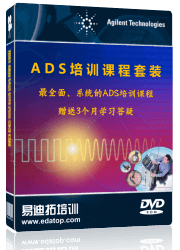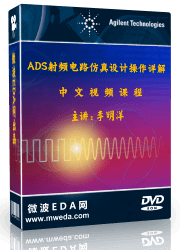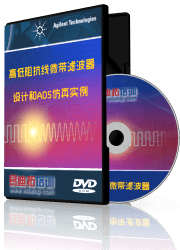- 易迪拓培训,专注于微波、射频、天线设计工程师的培养
Inductance of an inductor using TSMC 0.18um ADS PDK and Momentum simulation
I have used two methods to get L and Q of an on-chip inductor in TSMC 0.18um.
1) Using the inductor in TSMC's ADS PDK (from palette in schematic view)
2) Using the exact same structure of the above pcell and simulating it with Momentum
at 1.8 GHz, L and Q got from above methods are:
1) L= 560 pH, Q= 9
2) L= 618 pH, Q= 15
I am quite handy using Momentum so I doubt that these discrepancies are results of my poor settings.
There is no problem in the defined substrate (measured and simulated S-parameters of other passive devices match with each other)
What could be the problem? don't you think that L and Q from ADS PDK should be accurate?
I can't comment on TSMC 180nm, but I have seen other PDKs where models had mistakes.
You should troubleshoot the difference step by step, starting with series L and series R. Next, look at the shunt path (Cox, Csub Rsub). I have documented the steps here:
http://muehlhaus.com/wp-content/uplo...-Simulated.pdf
volker_muehllhaus: you are a life savor, thank you
At the first step, DC resistance on the inductor from ADS PDK and the one from Momentum simulation are way different.
On the other hand the calculated DC resistance matches with the one from Momentum simulation.
Based on the above, we can judge that Momentum simulation is more accurate.
But the problem is:
I am using UTM (ultra thick metal, thickness=4.6um) which its sheet resistance is not written in the document. Only sheet resistance of M6 with thinner metal with the thickness of 0.99um is written.
I thought since the material should be same, sheet resistance of the UTM should be 4.6 times of that for thinner M6.
Am I right?
Did you only write it the wrong way, or simulate the wrong way?
The sheet resistance of the thick metal is smaller, you must divide by 4.6
I just made a mistake in writing it, as you said I divided it by 4.6 in simulation.
Actually in simulation I didn't use sheet resistance. I just used sigma which is same for both thinner and thicker metals.
My question is: Is this assumption right? that is, assuming that the material used for M6 (thinner case) and UTM (thicker case of M6) are same.
By the way, I was impressed by your very nice document and great work.
I don't know the details of this technology. Usually the conductivity is the same between layers, but there exist some technologies with mixed materials, like aluminimum for the bottom layers and thick copper for top metal.
I advise you test using precision meter and test condition according to spec. e.g. WK or HP meter.
Addition L unit is pH?
The problem is I don't have the fabricated inductor and for now I am only relying on simulation and I cannot use precision meter.
Yes, unit for L is pH.
申明:网友回复良莠不齐,仅供参考。如需专业帮助,请学习易迪拓培训专家讲授的ADS视频培训课程。
上一篇:DRO A 9.9 GHz in ADS
下一篇:Can someone help me design a loop antenna using ADS pls 434 Mhz and 2.45Ghz please
ADS婵炴垶鎼╅崢浠嬪几閸愵亝鍠嗛柛鈩冧緱閺嗐儵鏌涢埡鍐炬敯妞ゆ柨瀚板顐⑩枎閹存梹鐓� | More...
 国内最全面、最专业的Agilent ADS培训课程,可以帮助您从零开始,全面系统学习ADS设计应用【More..】
国内最全面、最专业的Agilent ADS培训课程,可以帮助您从零开始,全面系统学习ADS设计应用【More..】
- Agilent ADS教学培训课程套装
- 两周学会ADS2011、ADS2013视频教程
- ADS2012、ADS2013射频电路设计详解
- ADS高低阻抗线微带滤波器设计培训教程
- ADS混频器仿真分析实例视频培训课程
- ADS Momentum电磁仿真设计视频课程
- ADS射频电路与通信系统设计高级培训
- ADS Layout和电磁仿真设计培训视频
- ADS Workspace and Simulators Training Course
- ADS Circuit Simulation Training Course
- ADS Layout and EM Simulation Training Course
- Agilent ADS 内部原版培训教材合集








